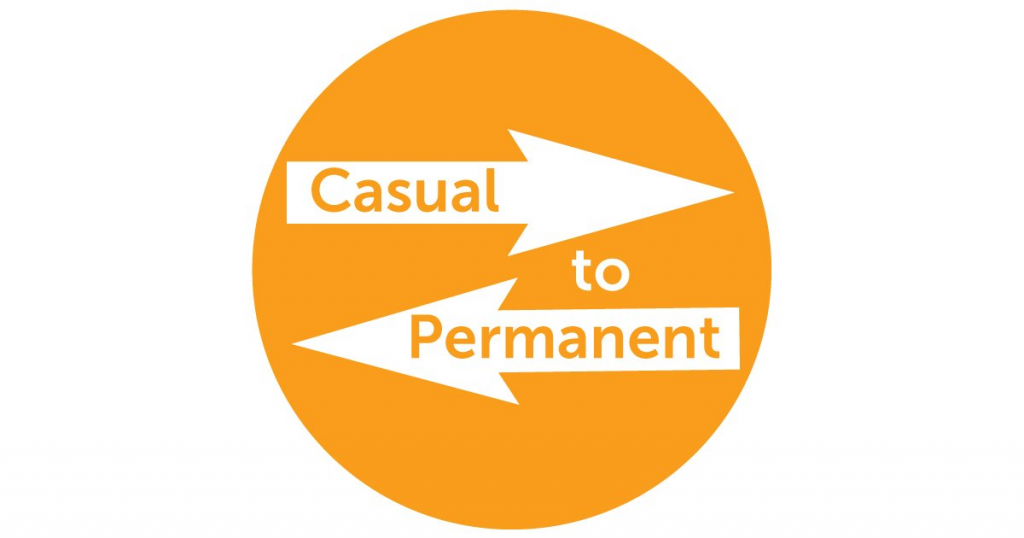Casual Conversion
The Fair Work Act 2009 was updated on 26th March 2021 to reflect new workplace rights and obligations for casual employees. One of the main changes to the Act was the requirement for employers to provide their casual staff with a Casual Employment Information Statement. The statement brings to light several aspects of casual employment centered around “casual conversion”. So what is casual conversion and how will affect employers in Australia?
Casual conversion is when a casual employee moves to permanent part-time or full-time employment. The recent changes to the Fair Work Act enforce new casual conversion rules for employers. Some rules affect large employers, while others affect small employers (those with 15 or fewer employees).

If you are a large employer, you must offer your casual employee the opportunity to move to permanent positions when/if s/he:
- has worked for you for 12 months
- has worked a regular pattern of hours for at least the previous 6 months
- could continue to work the same hours (or more hours) as a part or full-time employee without too much disruption to himself or the workplace
You do not have to offer casual conversion if you have reasonable grounds to do so. These may include the following:
- the employee’s position will cease within 12 months
- the employee’s hours will be significantly reduced
- the times and/or the days the work is to be performed will be significantly changed and those changes cannot be accommodated by the employee’s availability to work
- making the offer would not comply with a State or Territory law

Please note, however, even if you have decided not to offer casual conversion to your staff initially, this does not mean that they cannot apply for it at a later date.
If you are a small employer, you are less likely to be affected by these new casual conversion rules. However, please note that this does not stop your casual employee from requesting conversion. If this occurs, you must act accordingly and attempt to accommodate the employee’s wishes.
If the employer decides not to make an offer for casual conversion, he must do so in writing as per the Fair Work website. However, I would say that it is best practice to ensure that all communication with your employees about changes to their employment, is in writing. So, if you are going to make an offer for conversion or decline an offer, always put this in writing and file the document with the employee’s records.
If you need further information about casual conversion, please visit the Fair Work website.

